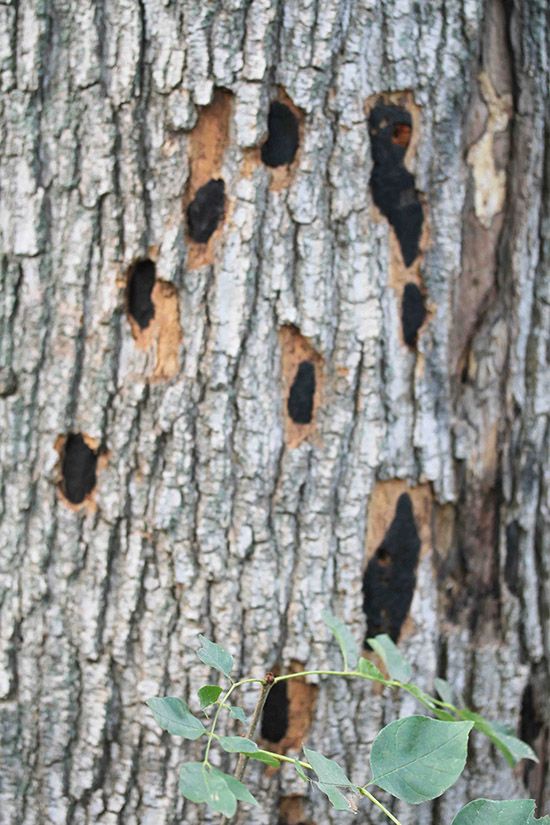Issue 16, October 6, 2014
Red Oak Borer
Red oak borer, Enaphalodes rufulus, is a longhorned beetle that attacks live oak trees, causing primarily cosmetic damage to landscape oaks in the form of oval exit holes about one-half inch long in the trunk and piles of wood fibers and frass at the base of the tree. Woodpeckers make larger holes while feeding on the larvae. Exposed, damaged wood is blackish.
Red oak borer damages many oak species in the both red and white oak groups, preferring northern red, black, scarlet, Nuttall, water, and overcup oaks. Maples can also be attacked. It has a two-year life cycle, with young larvae primarily tunneling in the cambium, tunneling deeper into the sapwood in the latter part of their first year and during their second year. Larvae also tunnel in the bark. Tunneling into the wood degrades the value of the wood as lumber. Sapwood tunnels are flattened ovals about one-half inch wide and ten inches long.
Adult beetles emerge in the Midwest in odd-numbered years, being most common during June and July but are present from May to October. They are about two-thirds to one inch long with long antennae. They are covered thickly with short golden hairs, which are worn away, exposing the reddish-brown surface below. The posterior ends of the elytra extend into sharp points along the midline. Adult mated females lay one to four eggs in each small niche that they chew into the bark, laying about 200 eggs per female. Larvae are whitish and elongate with tiny legs and dark mouthparts.
Biological control is performed by downy and hairy woodpeckers, eliminating about 40% of the young larvae. However, their chipping away at the bark to reach the larvae causes obvious aesthetic damage as seen in the photos. About 30% of older larvae are killed sap beetles, ants, and fermenting sap.

Red oak borer damage with woodpecker feeding damage.

Close-up of red oak borer damage with woodpecker feeding damage.
Contact insecticide sprays to kill hatching larvae is not practical due to the adult beetles being present for six months even though most eggs and subsequent larval hatching occurs during June and July. Many systemic insecticides, such as imidacloprid, are unlikely to provide control because they function primarily to kill the adult beetles when they feed on the leaves and red oak borer adults do not feed on leaves and twigs like emerald ash borer and many other borers. Emamectin benzoate, sold as Tree-Age, is likely to be effective, but I have not seen any efficacy test results on longhorned borers.
Mechanical control in the form of threading a soft wire up the tunnels to pierce and kill individual larvae has been shown to be effective. Insects are much poorer at healing wounds than we so even a slight piercing of the larva is likely to cause it to bleed to death. (Phil Nixon)
Author:
Phil Nixon